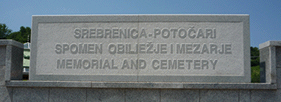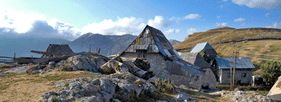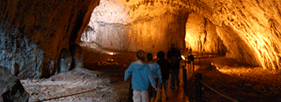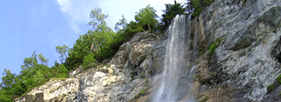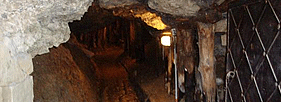Symbol of Sarajevo''''s spirit: "House of Spite"
After the Austrian - Hungarian monarchy occupied Bosnia and Herzegovina, they have began to build various buildings. The Post Office, National museum, Faculty of Law and different residential houses, but when they tried to build the City Hall they experienced Bosnian stubbornness.
This building is a symbol of the Bosnian stubbornness, defiance and perseverance, so it''''s called "House of Spite", and represents a valuable cultural and historical monument. The story of "House of Spite" began in 1892. when the Austro-Hungarian authorities decided to start the construction of City Hall on Mustaj pasha''''s mejdan, spred Apel quay along the Miljacka, and was planned departure electric tram. Implementation of these plans to work disturbed the house that was built on the right bank of the river.
"House of Spite" was first built in the 18th centuary at the time of the Ottomans, on the right bank of the Miljacka, near the riverbed. Since the Miljacka often flooded, it''''s a wonder how the owner could get permission to build it literally by the river, did not even have a garden. As it''''s the first to be built out of spite.
After many negotiations Bendevija, allegedly, ultimately requested that his house pice by pice is moved to the other side and built along the river. His desire to move the house was difficult to comply, given that the building was built of unbaked brick, or of brick clay sun-dried and mixed with wheat stubble. In addition to moving house Bendevija asked for a bag of gold coins. It is said that Bendevija every day sat in the middle of a nearby Šeherćehaja bridge, smoking tobacco on his long cigarette-holder and carefully watched as workers move goods and his house on the other side. Some elements could not be moved, such as base, windows etc..
Replica is popularly called "House of Spite", changed a lot of owners from Bendevija to date, and it''''s currently a reputable national restaurant. The building has its architectural values and they''''re under the protection of the Institute for the protection of the cultural heritage. It was built of wood and adobe brick. The roof is covered with tiles, type of tile that was at the time of the Ottomans. After subsequent restoration of the "House of Spite" part of the Mediterranean tile was added. The house has never had a basement, it''''s understandable because it would be in the level of the river. Originally, it had a ground floor and first floor, and later expanded. The interior has retained the Bosnian authentic look. Inside the "House of Spite" time seems to have stopped for more than 100 years. The whole atmosphere is reminiscent of the Bosnian house, built in the Ottoman period. Dominated by wood, sofas, small tables and chairs. In the corners are seharas (jewelry boxes), on the shelves are old Bosnian dishes such as ibrik (ewer). Lighting is decorated in the traditional way and the lyrics of the sevdalinka, traditional Bosnian songs, enhancing the overall impression.
"House of Spite" and City Hall connects Šeherćehaja bridge, the first stone bridge in Sarajevo. Originally it had five arches and one of them was walled during regulation bank of the river. Bridge was built in the early 16th century by mayor of Sarajevo (šeherćehaja) and after which it was named. Harmoniously built of travertine and it''''s one of the masterpiece of the former architecture. This bridge received special importance after construction of the City Hall on one side and transfer of the "House of Spite" to the other side.
For the best experience of Sarajevo and the story of "Spite House", as well as other sights of Sarajevo, we recommend you to take a tour called Grand City Tour.
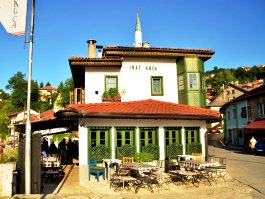
.jpg)
.jpg)













